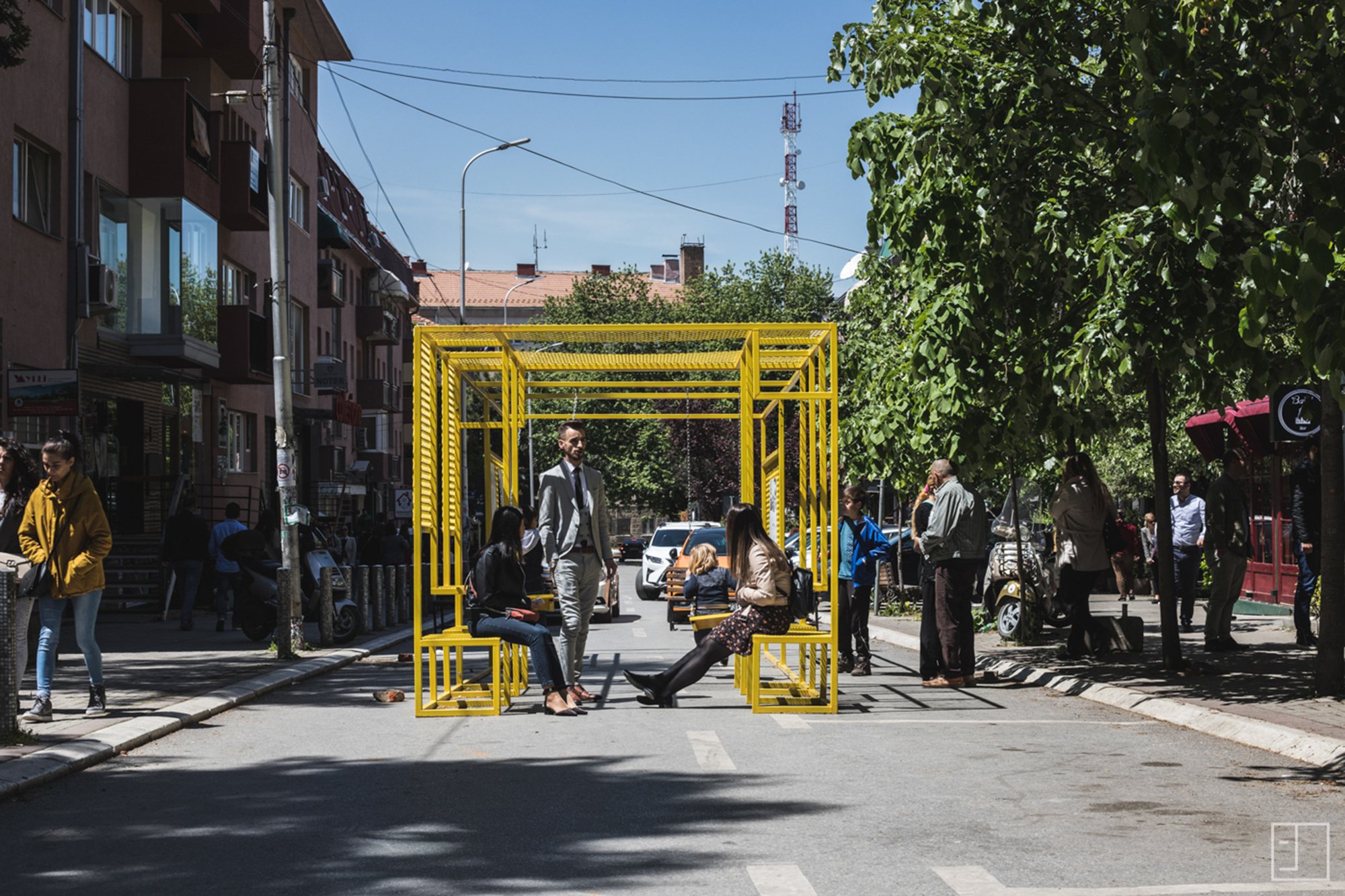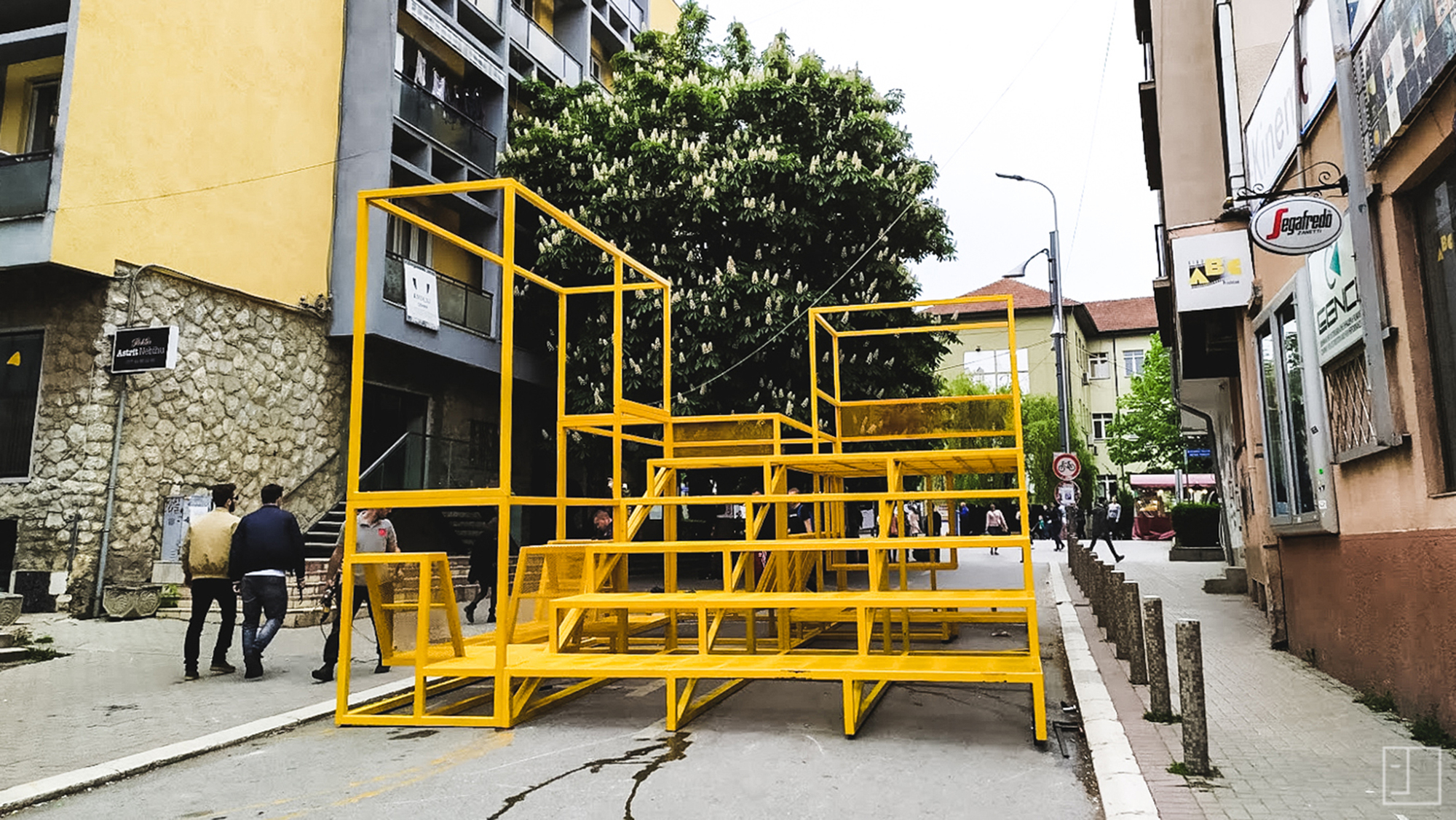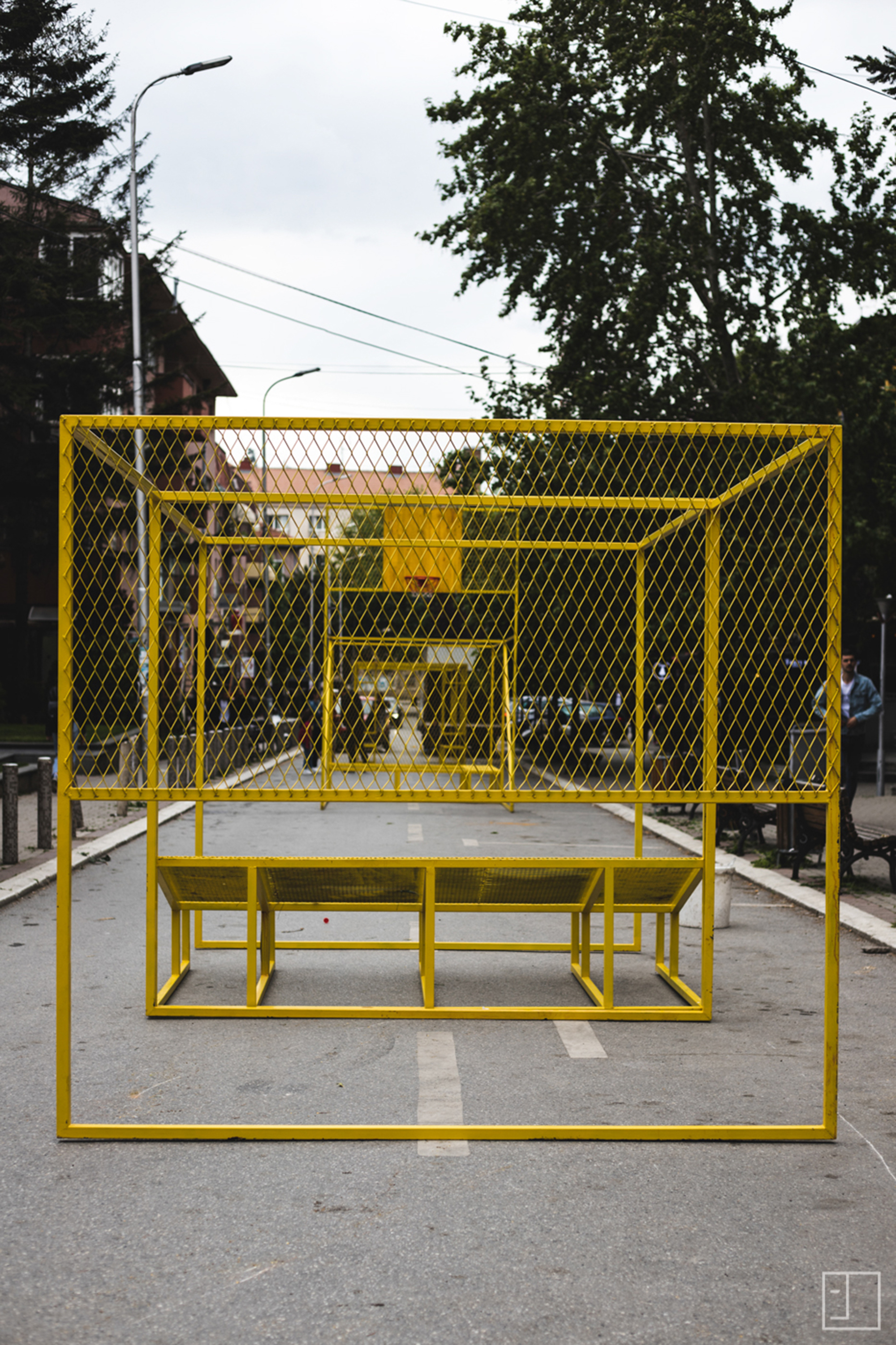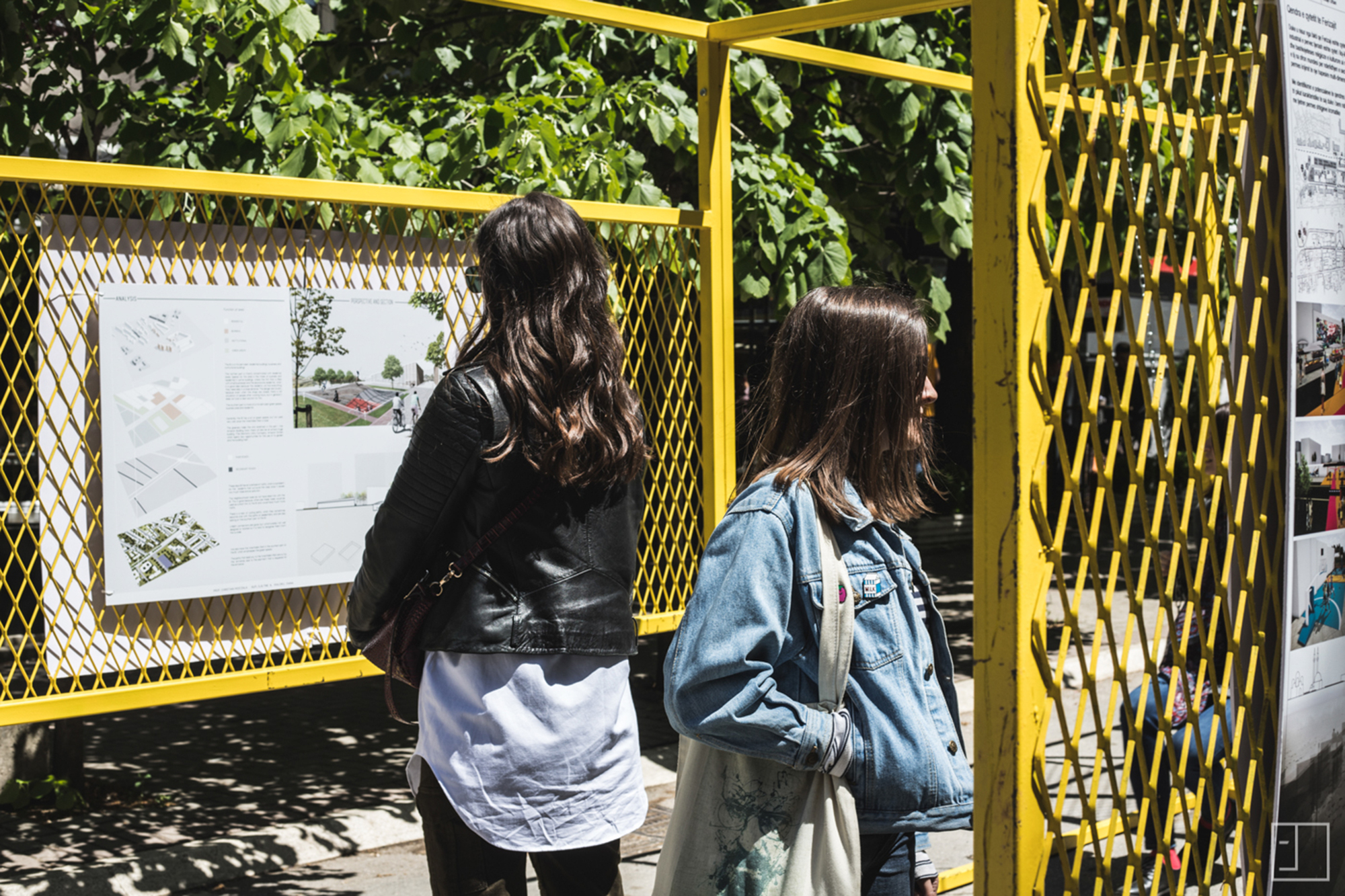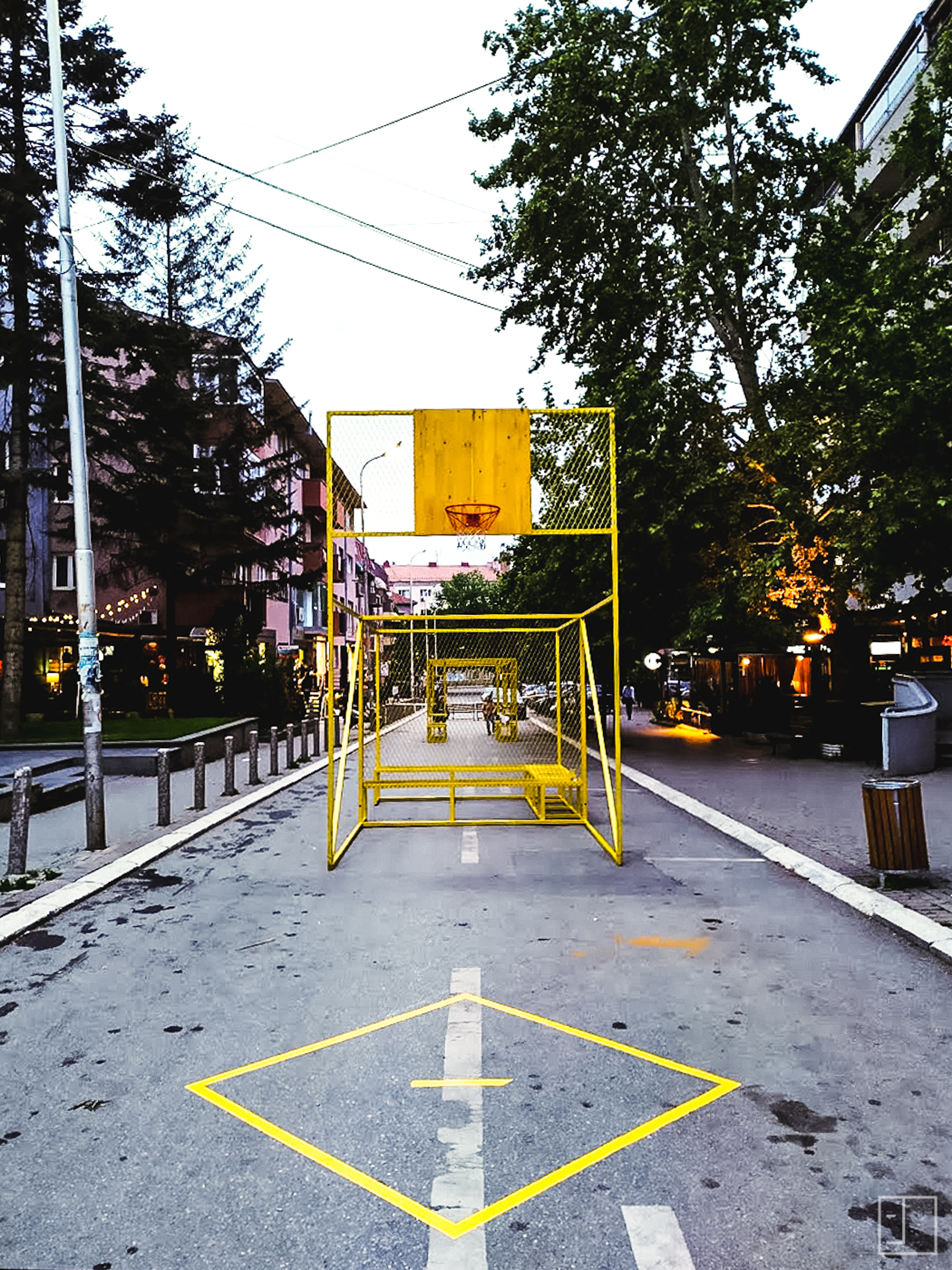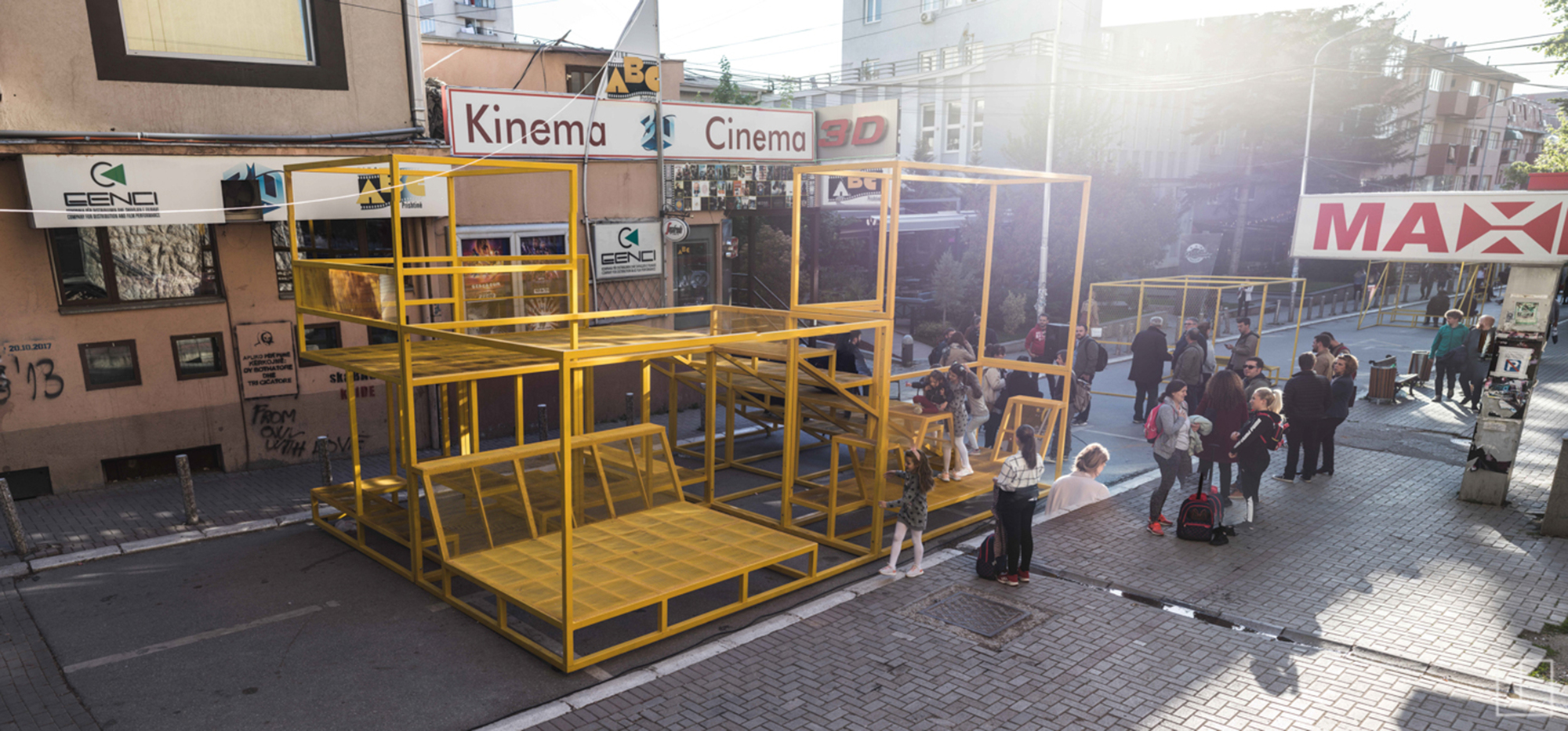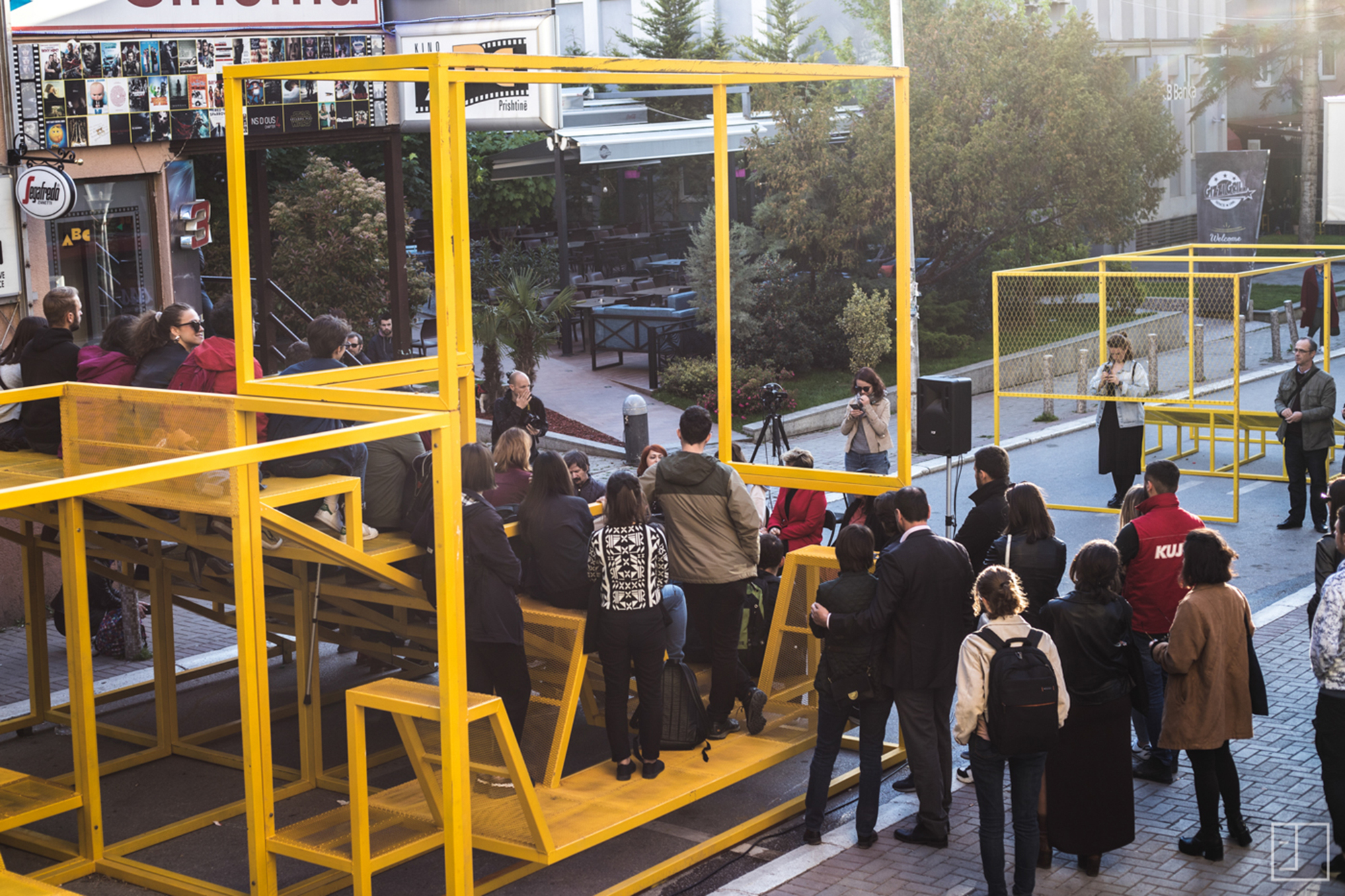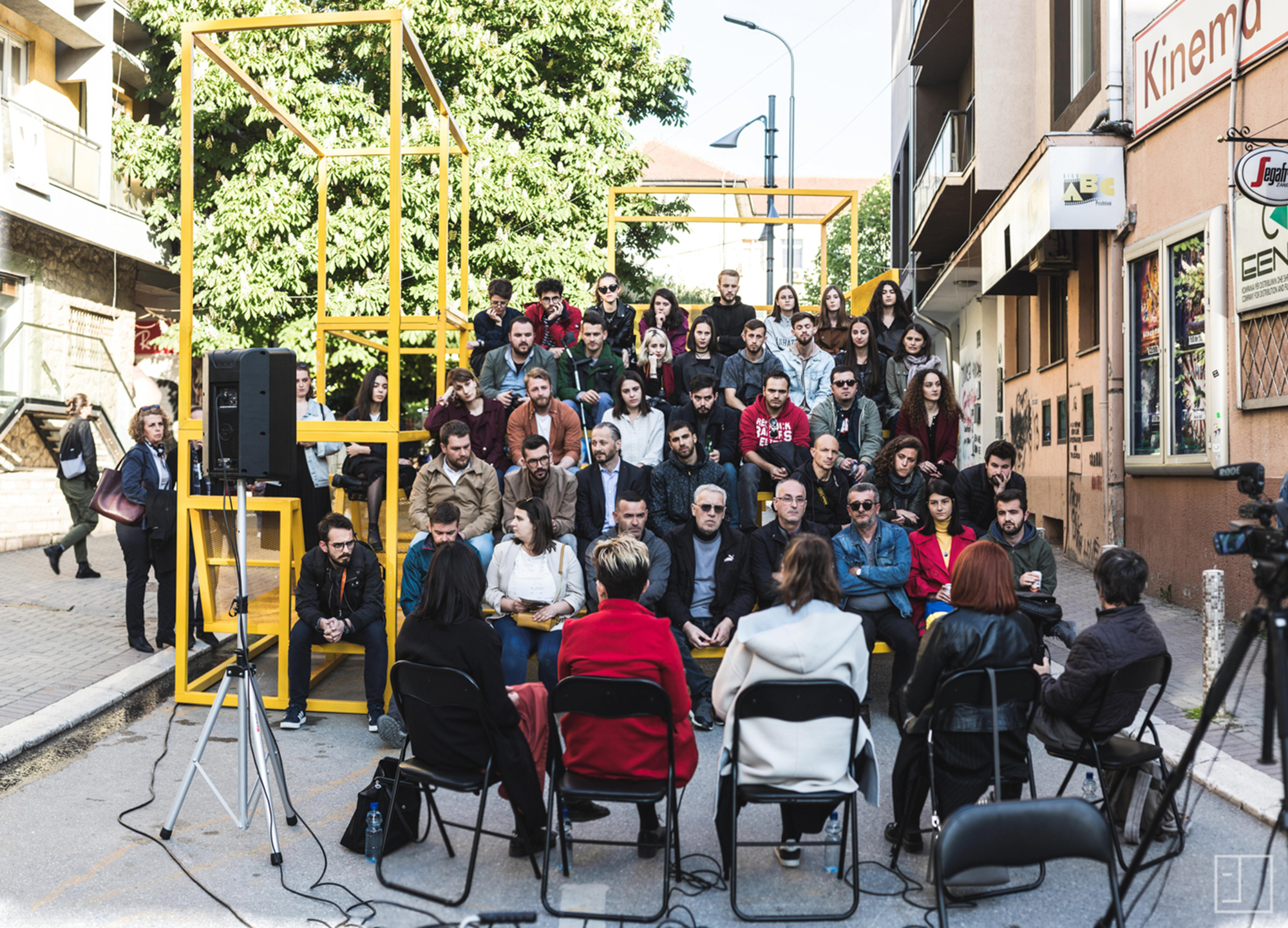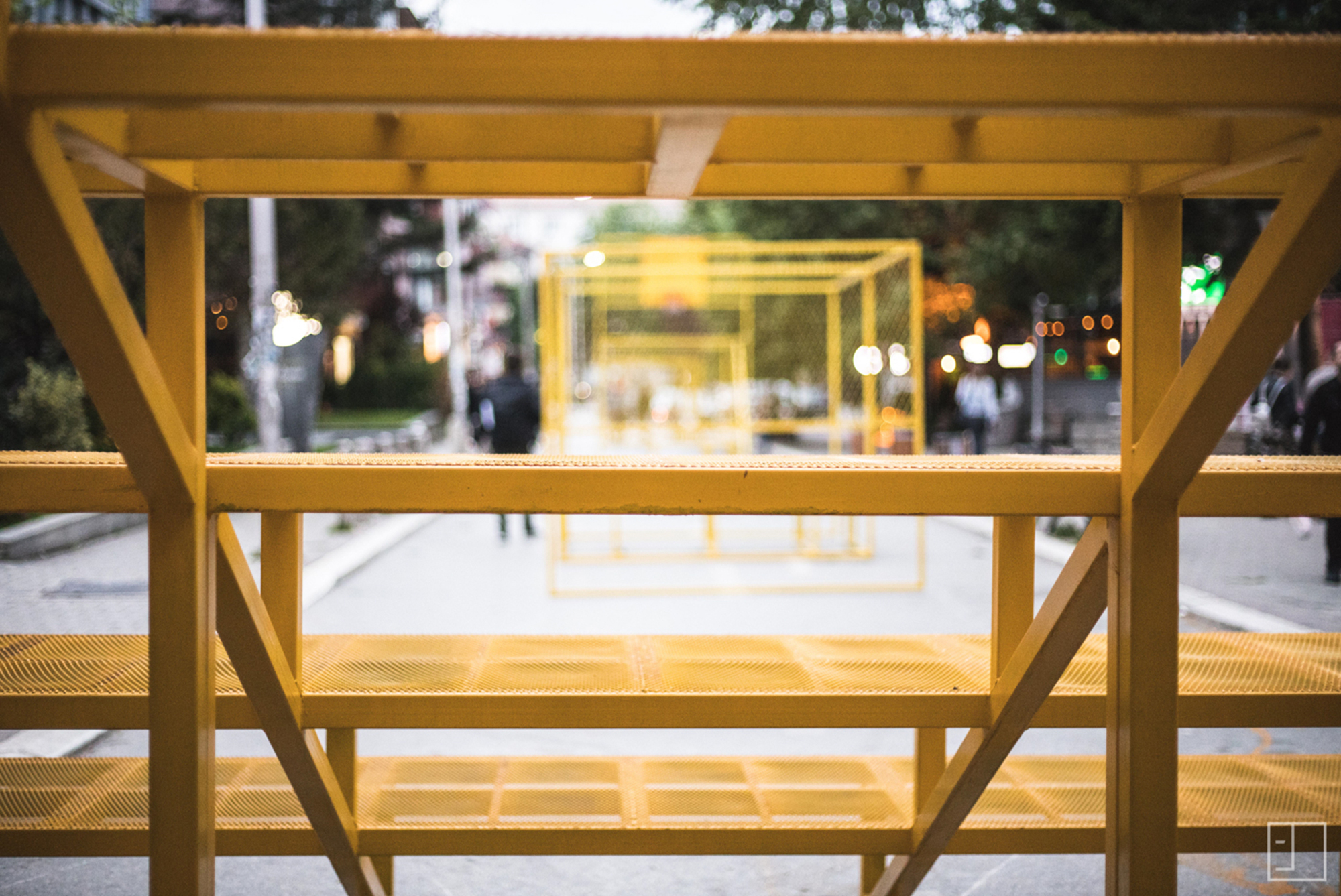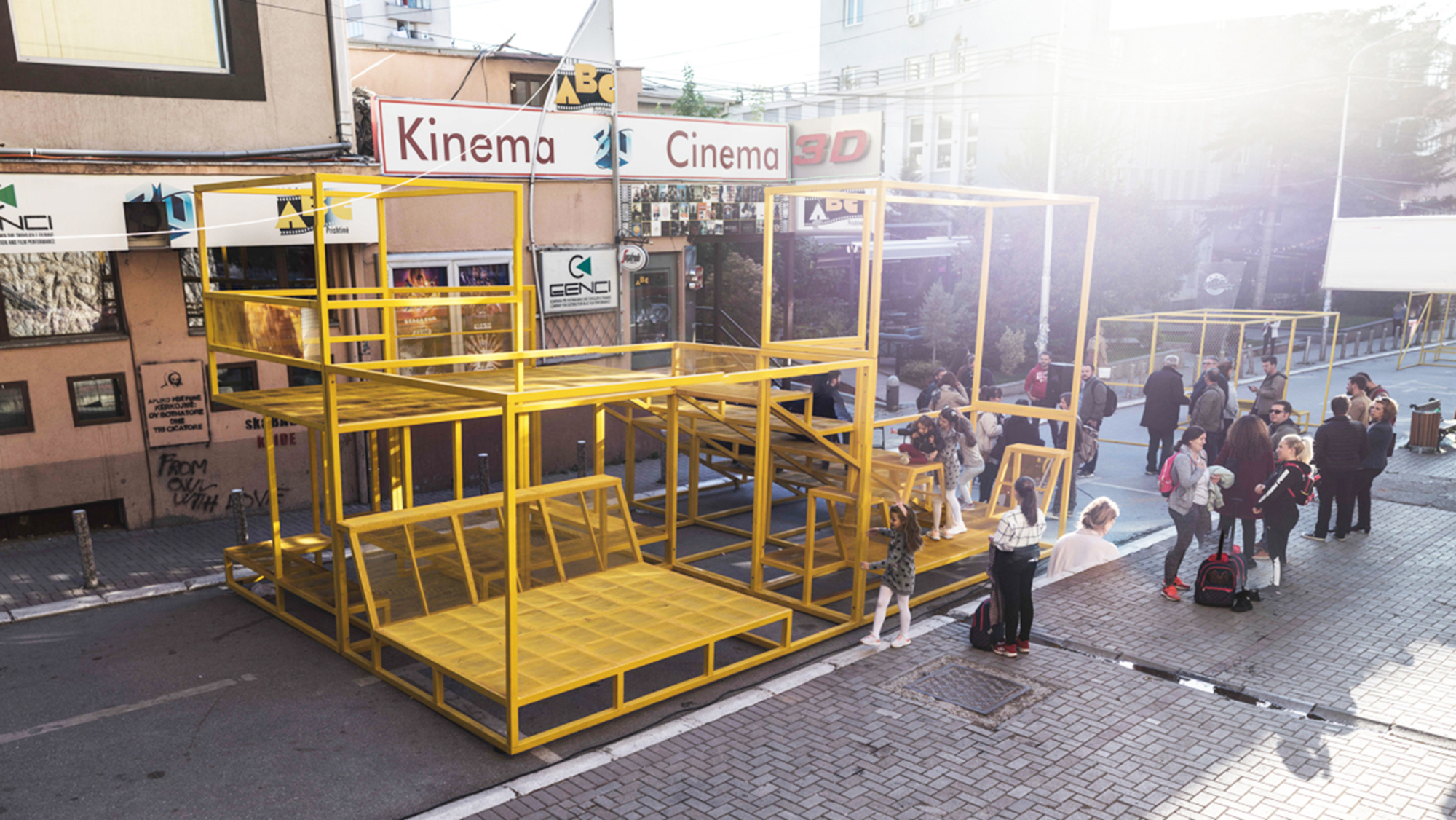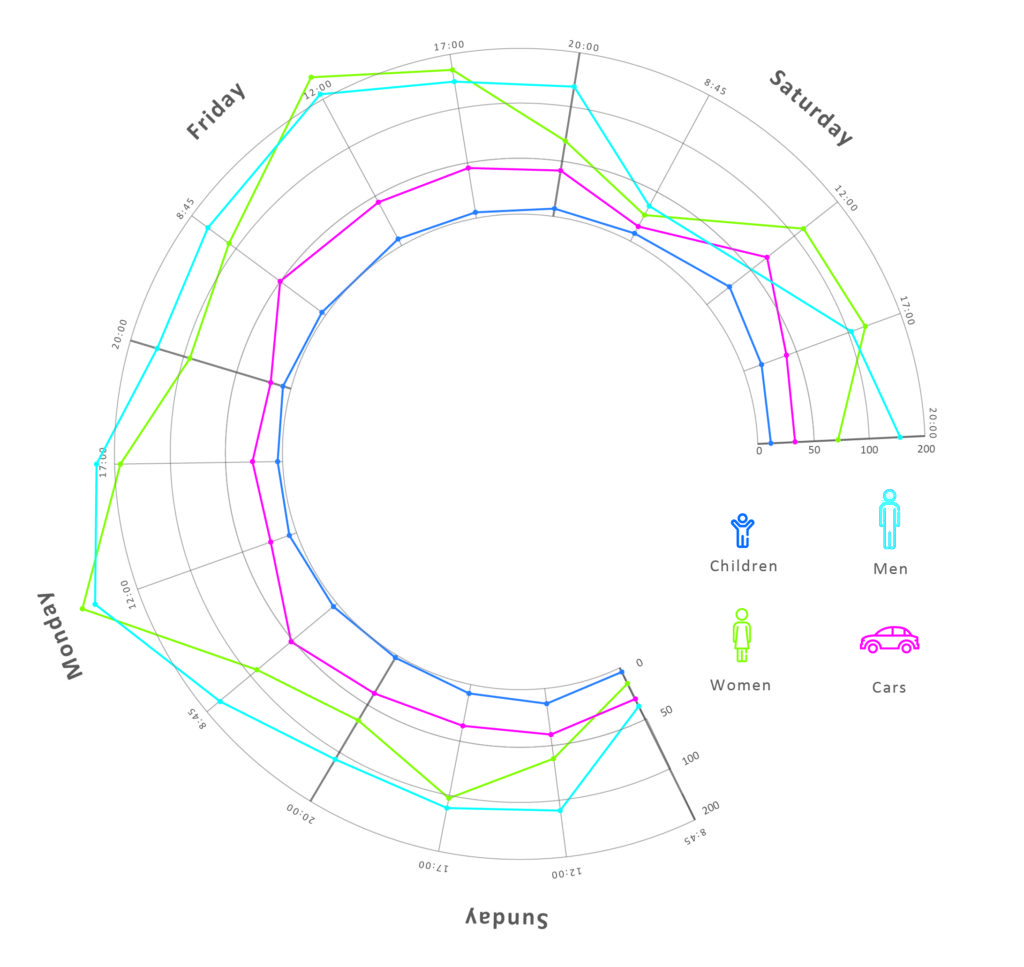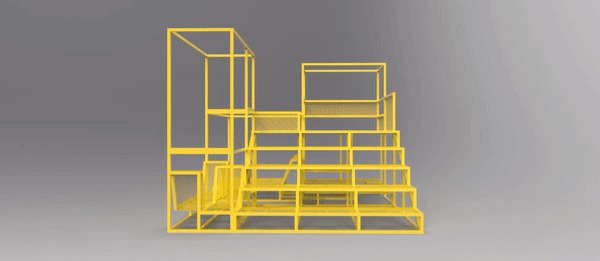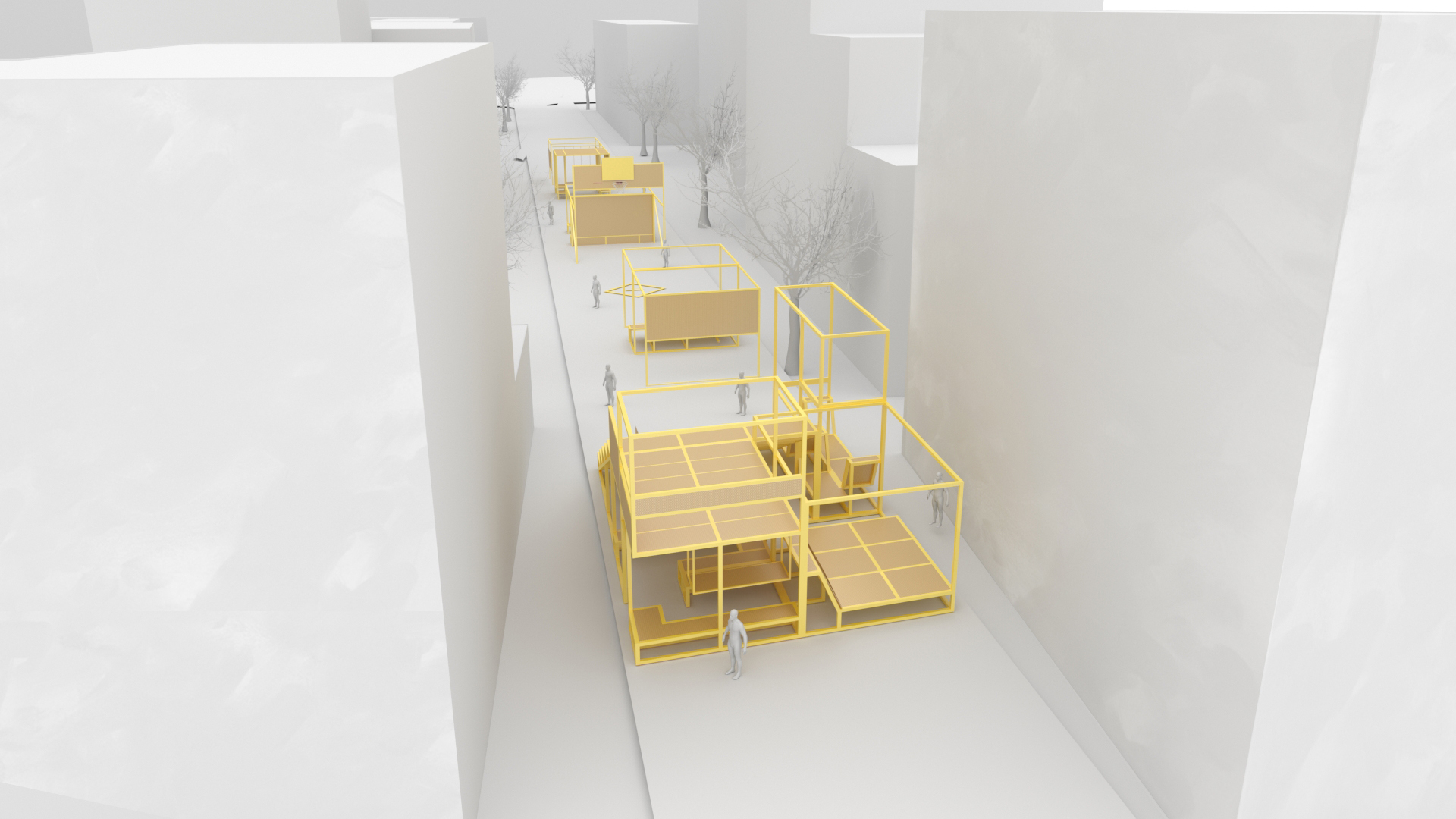The post-’99 city of Prishtina has had the burden as well as the delight of providing for an extensive part of Kosovo’s population. This has put a strain on the city’s urban development with a constantly growing number of illegal buildings and extensions, usurped public spaces, and an increasing disregard for the city by the citizens. One individual that tried to put an end to this city’s deterioration that had already begun was Rexhep Luci, a citizen and architect who at the time was working towards the demolition of illegal buildings. His work in this regard and almost every similar process was terminated when Rexhep was shot in front of his apartment in the capital. With Rexhep Luci’s murder, the city of Prishtina became the committer, the victim as well as the spectator of this crime. Years later, the street that bears the name of the architect that once started the fight against clutter and chaos, is one of the most cluttered and chaotic arteries of the city.
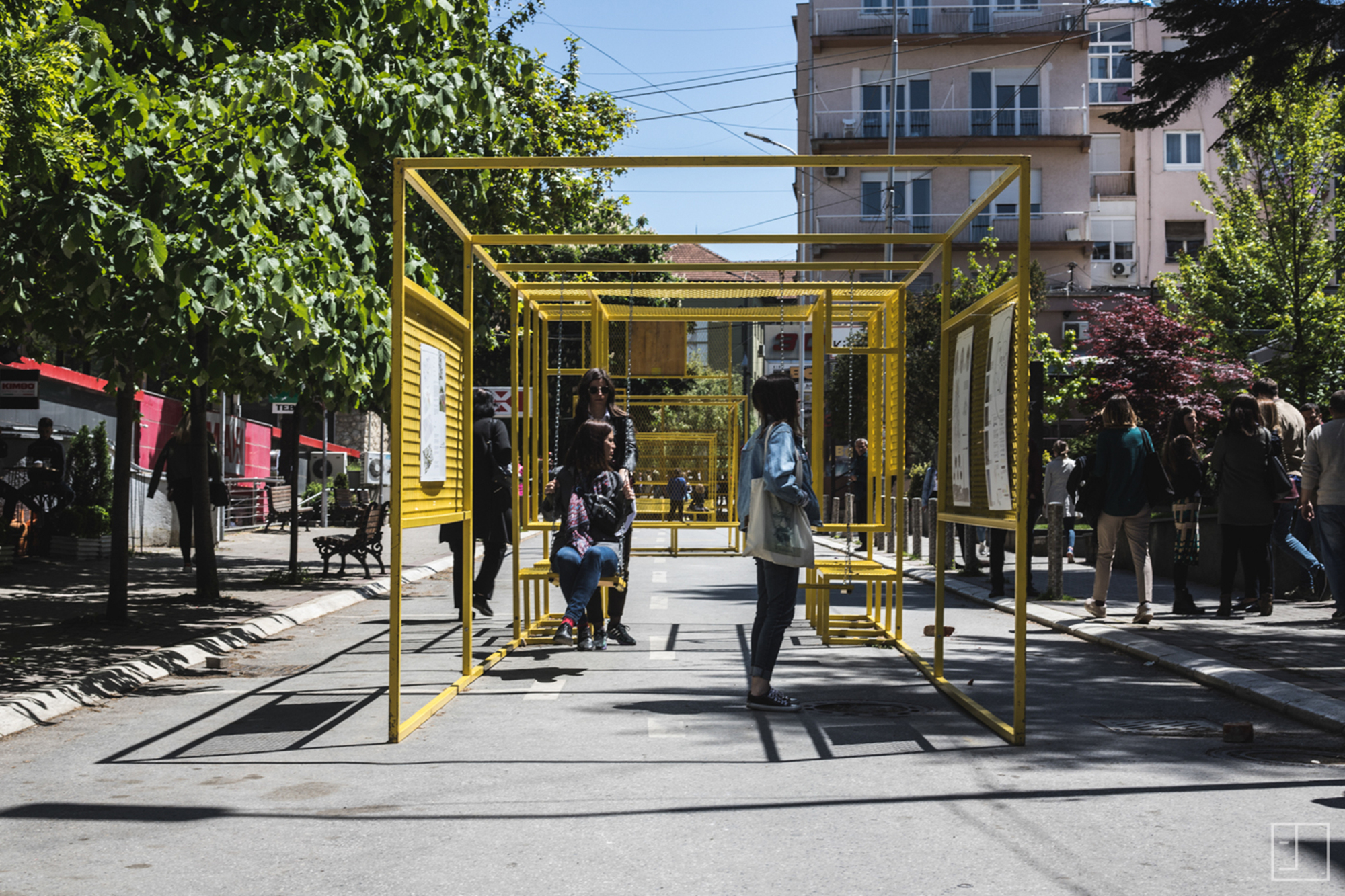
Rexhep Luci street has true potential to become a successful public space. There’s certainly no lack of people and the street itself is an active artery of the urban outline of the city. However, the street is mostly used as transit, with a very small number of people slowing down or stopping to enjoy the space. Additionally, the street has shown a very low presence of children, and a disproportion in the ratio between women and men, with men clearly being much more present in the street.


The aim of this intervention is to inspire social interaction on the street by providing the very simplest infrastructure. The yellow pavilion stands out and gives Rexhep Luci Street the distinct identity that it is lacking, which is done by engaging the public directly through supporting a wide range of activities for the users of the spaces.
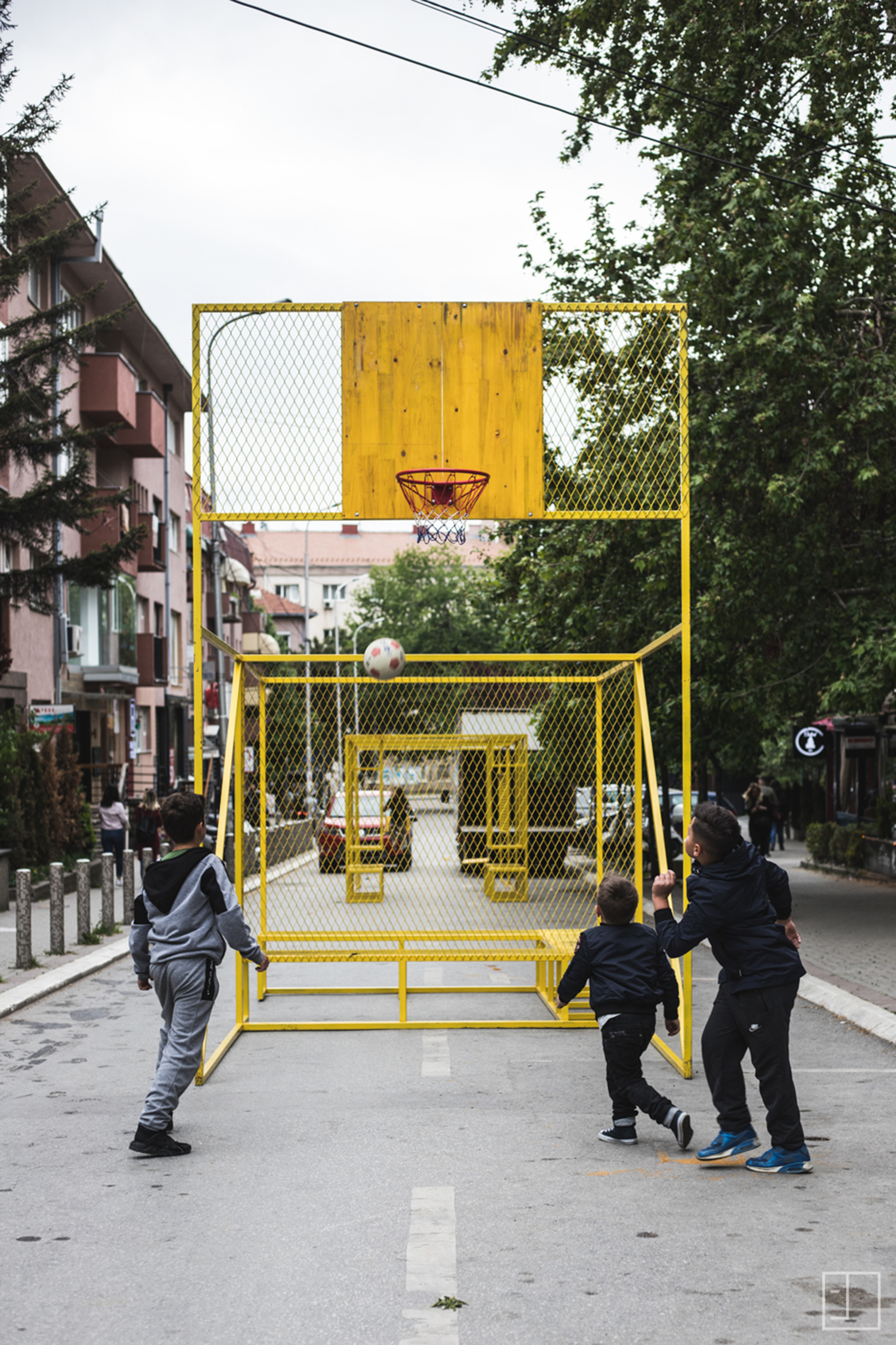
The yellow pavilion is set in the street close to the cinema in order to visually attract pedestrians, giving the street a characteristic that is visually present as well as inviting for the users. The main aim of the pavilion will be to connect the street with the boulevard in two essential dimensions.
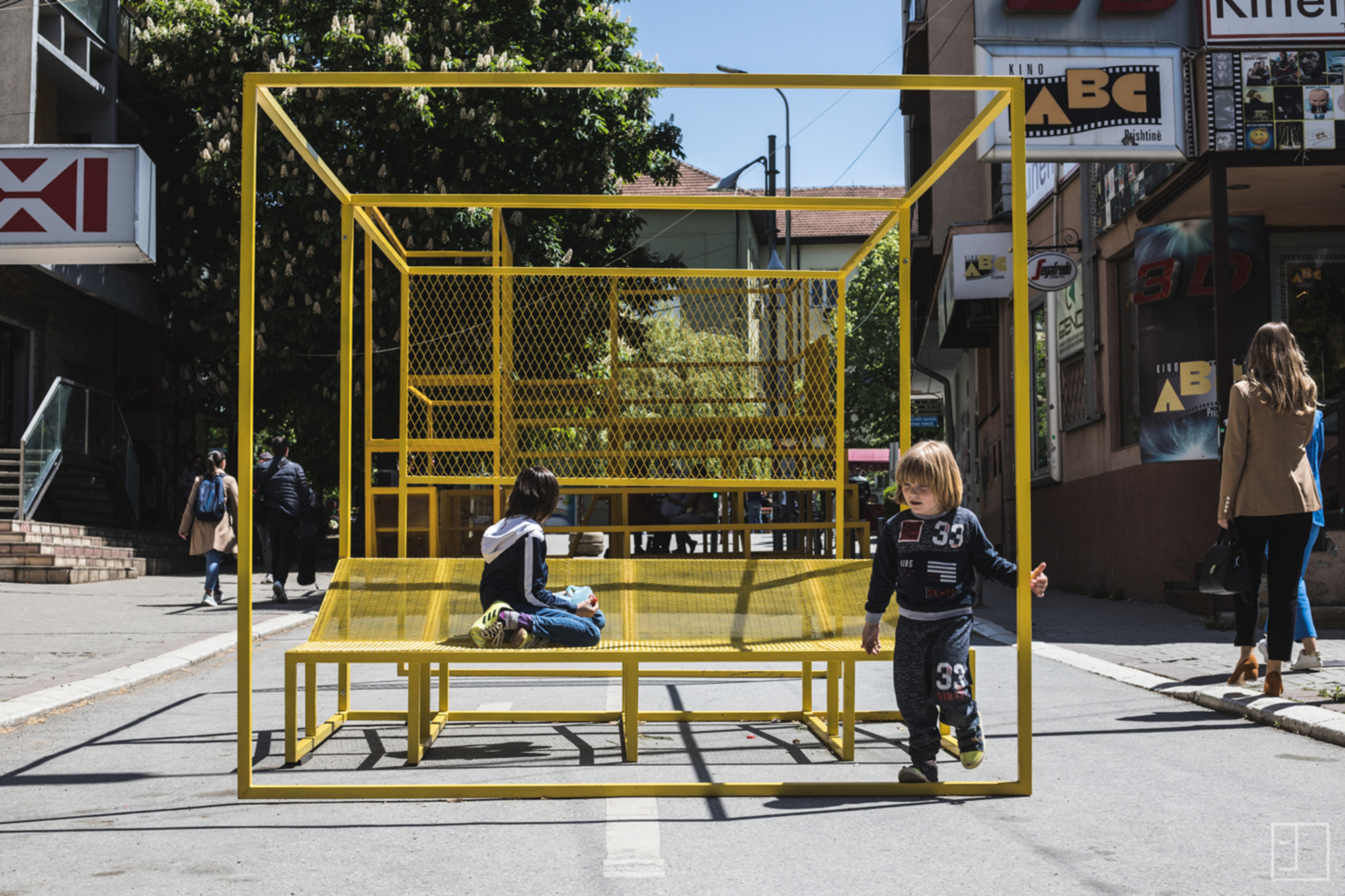
The intervention went on to host a number of activities that covered a wide range of fields from a relaxed basketball game, a spontaneous hangout spot, or a photoshoot background, a space for students to display their work, organized events, as well as a venue for debates and discussions where even the city’s mayor attended.
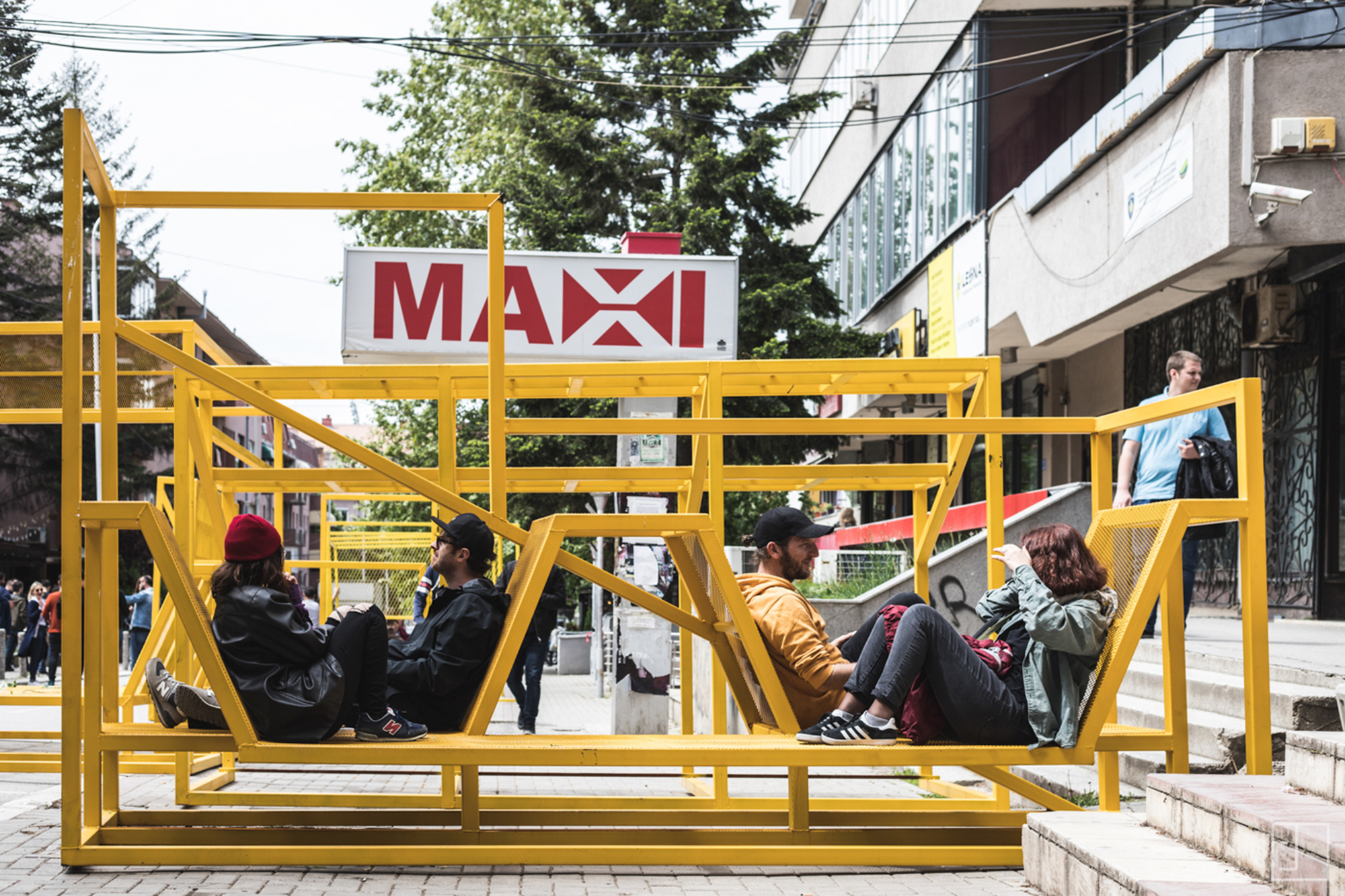
By the end of the one-week intervention, through observing the citizens using and passing through the structures placed on the street, it is obvious that the city is in dire need of free and accessible public space. However, public space is still more often than not perceived as a luxury instead of a fundamental necessity for a healthy everyday public life.
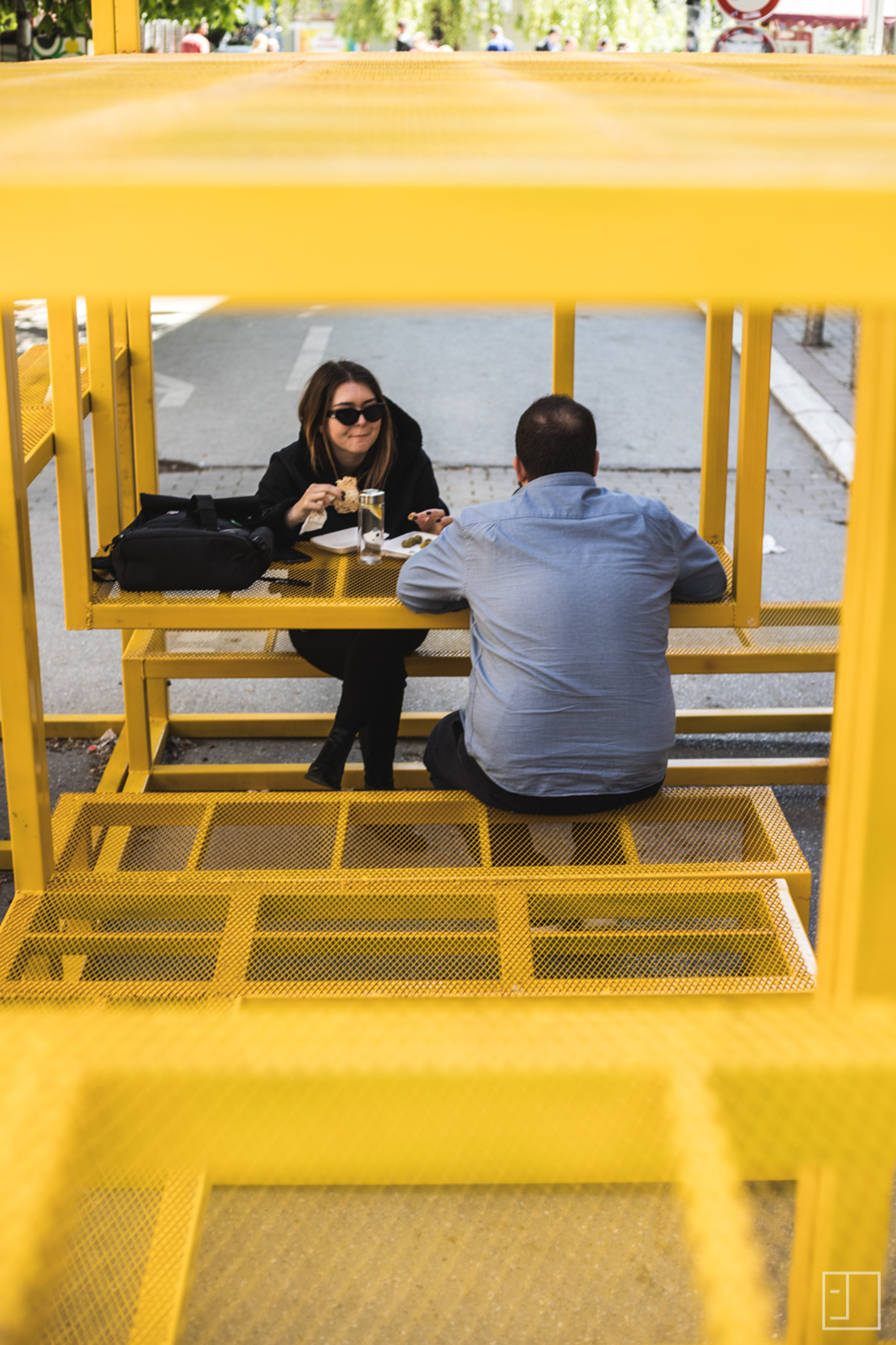
As much as good infrastructure can help with public life, organizing and taking part in debates and discussions, raising awareness, taking the necessary steps towards education, and together creating a quality experience of good public spaces and the life in-between, can help a city and the citizens in fundamental aspects.
